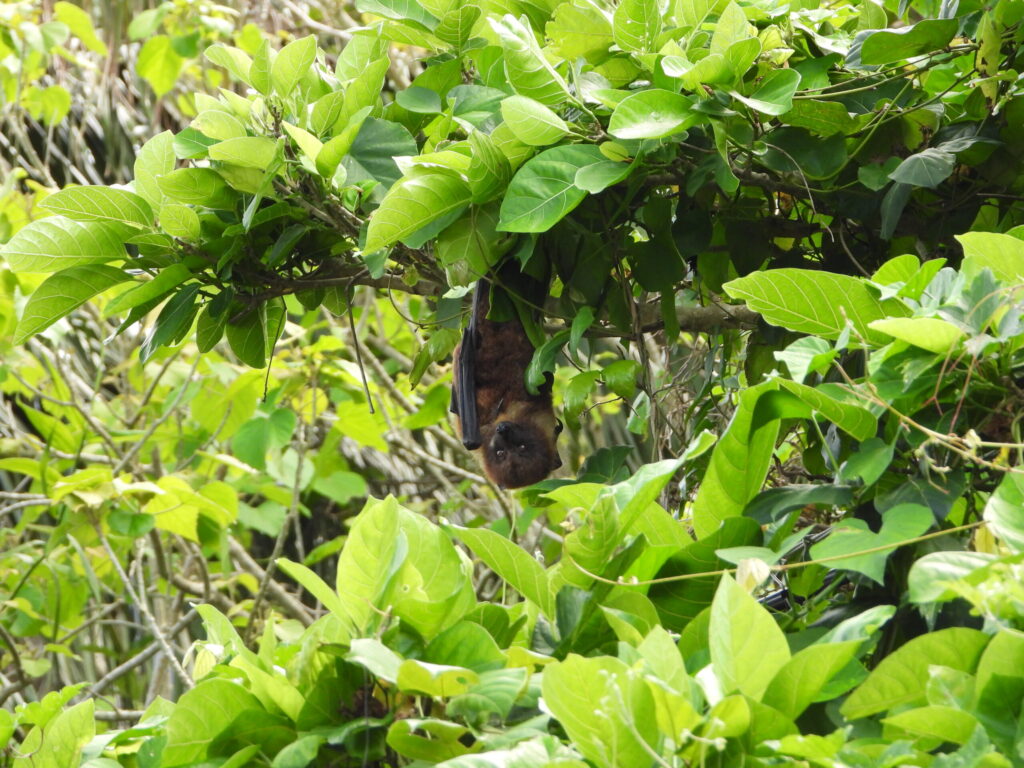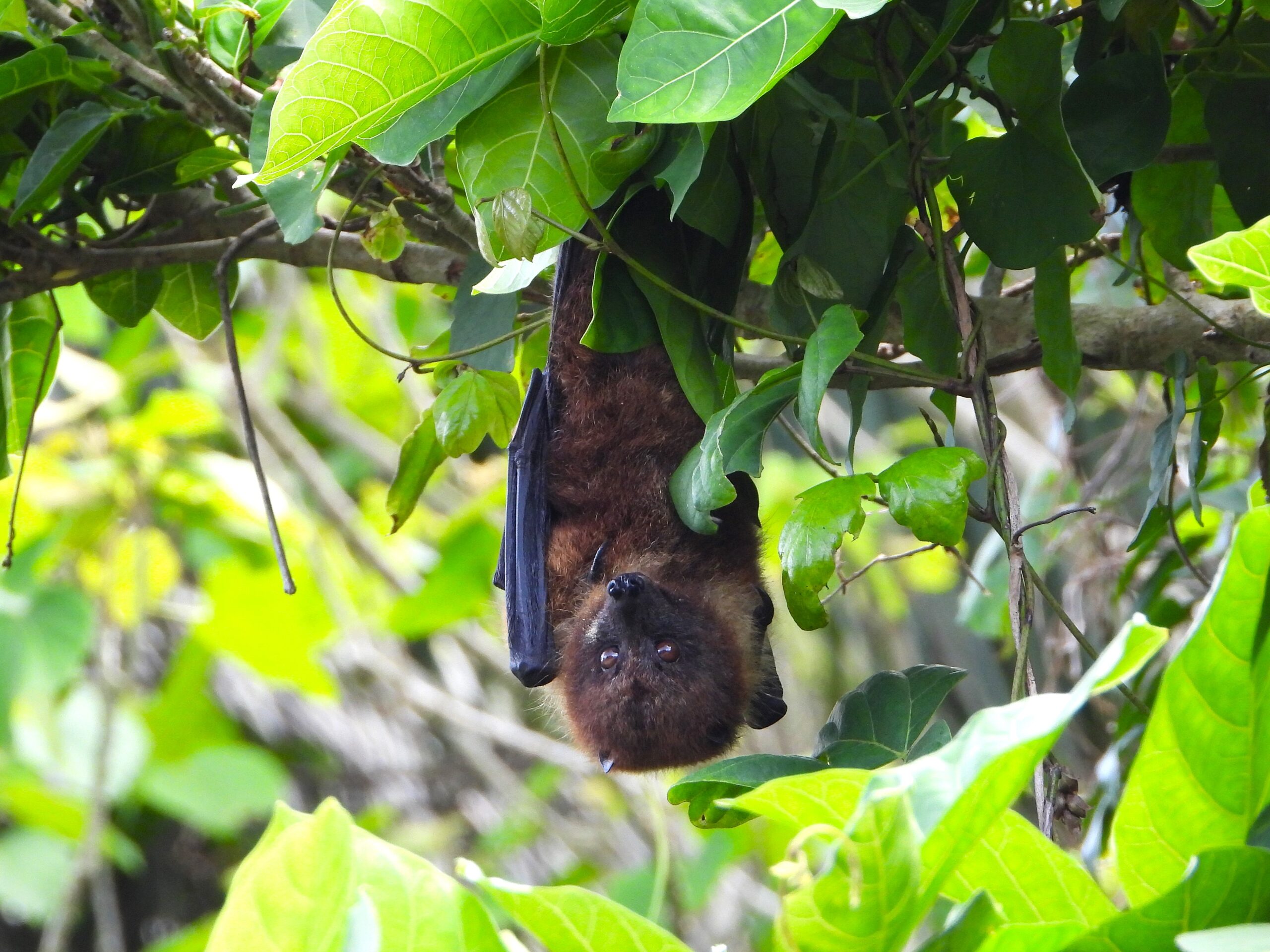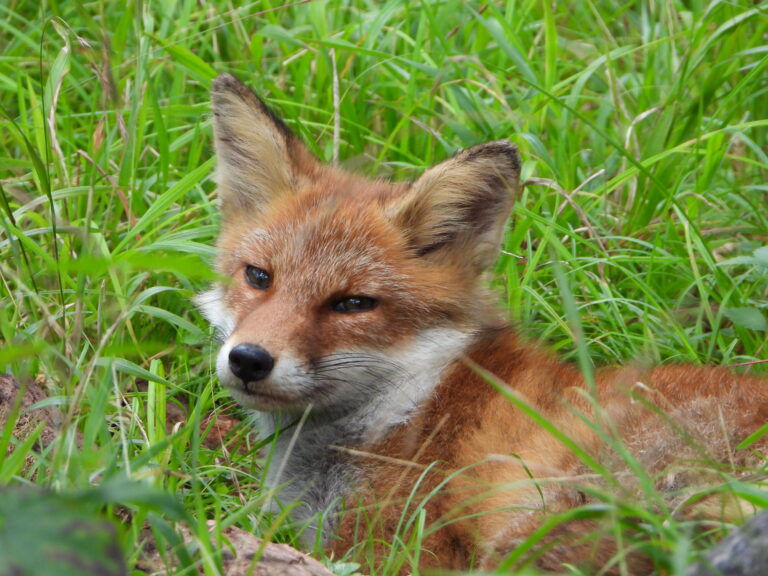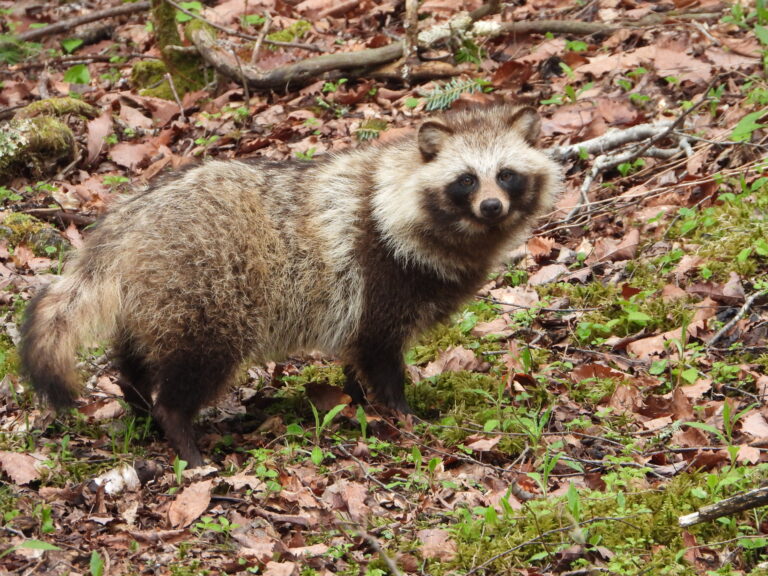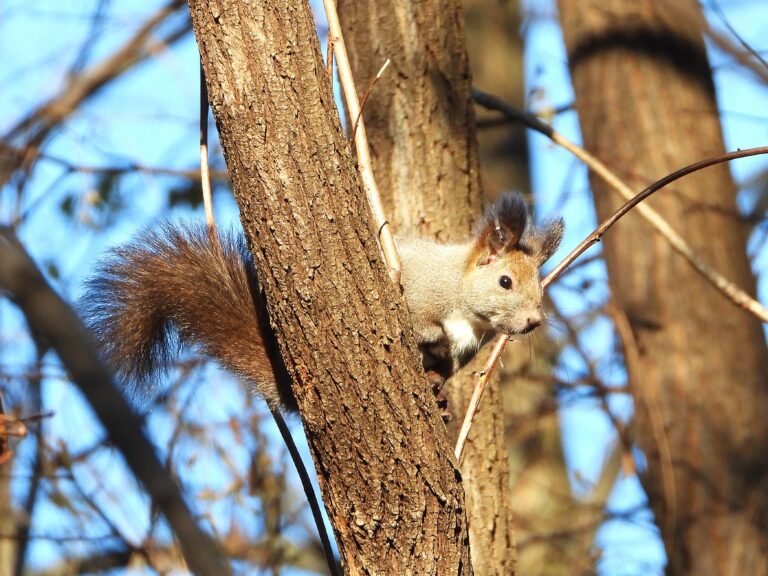Ryukyu Flying Fox (Pteropus dasymallus) – Wildlife of Japan
Introduction
The Ryukyu Flying Fox (Pteropus dasymallus) is a large fruit bat native to Japan’s Ryukyu Islands, Taiwan, and parts of the northern Philippines. As one of the few large mammals on these subtropical islands, it plays an essential role in seed dispersal and pollination, maintaining the health of forest ecosystems.
Appearance
This bat is one of the largest in Japan. Its wings can span about 1.3 m, and the body length reaches around 20 cm. The species is easily recognized by its thick fur and the light-colored “collar” around the neck, which inspired its Japanese name Kubiwa Ōkōmori (“neck-ring bat”). The face resembles that of a small fox, a characteristic trait of the Pteropus genus.
Habitat & Distribution
The Ryukyu Flying Fox inhabits subtropical forests across the Ryukyu Archipelago, including the Okinawa, Miyako, Yaeyama, Daitō, and Tokara Islands. It roosts in tall trees rather than caves and forages mainly in forest canopies, sometimes near villages or orchards.
Subspecies
There are five recognized subspecies of the Ryukyu Flying Fox, each isolated on different island groups. Their genetic differences reflect long-term separation and local adaptation, making each population an important unit for conservation.
- Pteropus dasymallus dasymallus — Erabu Flying Fox (Erabu Ōkōmori)
Found in the Tokara Islands and Kuchinoerabu Island (northern Ryukyus). - Pteropus dasymallus inopinatus — Orii’s Flying Fox (Orii Ōkōmori)
Distributed across Okinawa and the Kerama Islands (central Ryukyus). - Pteropus dasymallus yayeyamae — Yaeyama Flying Fox (Yaeyama Ōkōmori)
Occurs on the Miyako and Yaeyama Islands (southern Ryukyus). - Pteropus dasymallus daitoensis — Daitō Flying Fox (Daitō Ōkōmori)
Restricted to Minami- and Kita-Daitō Islands (Daitō Archipelago), Japan’s most isolated population. - Pteropus dasymallus formosus — Formosan Flying Fox (Taiwan Ōkōmori)
Found in Taiwan and nearby islets (outside Japan).
Because there is little gene flow among these island populations, conservation must be managed separately for each subspecies. In Japan, the Daitō Flying Fox is particularly threatened and listed as a nationally endangered species.
Behavior
These bats are nocturnal. They leave their roosts at dusk and travel considerable distances in search of food. They are generally social, sometimes roosting in small colonies, but group size varies by island and habitat. Their nightly flights contribute significantly to forest regeneration through the dispersal of seeds.
Diet
The Ryukyu Flying Fox feeds primarily on fruits, flowers, and nectar. Figs (Ficus spp.) are particularly important food sources. By feeding on these fruits and visiting flowers, the bats act as both pollinators and seed dispersers, making them vital for maintaining island biodiversity.
Reproduction
The species has a slow reproductive rate typical of large fruit bats. Females usually give birth to one pup per year after a gestation period of about 4–6 months. Mating seasons vary slightly between islands, but births often occur in early summer. Because of this low reproduction rate, populations recover slowly from decline.
Conservation
The Ryukyu Flying Fox is listed as Vulnerable on the IUCN Red List. Several island populations, such as those on the Daitō and Miyako Islands, are critically endangered at the national level.
Major threats include:
- Habitat loss due to deforestation and land development
- Entanglement in fruit-protection nets and conflicts with farmers
- Typhoon damage to roosting trees
- Genetic isolation among islands
Conservation efforts focus on forest protection, reducing agricultural conflict, and preserving genetic diversity between island populations.
Author’s Impression
I encountered the Yaeyama Flying Fox (Pteropus dasymallus yayeyamae) during one of my visits to the Yaeyama Islands. Although I often see them flying at dusk, I had never managed to photograph one before. But as I moved through the forest, I was astonished to find a Yaeyama Flying Fox hanging quietly from a branch. I kept my distance and took a few photos from afar—an unforgettable moment of encountering this rare and graceful creature.
